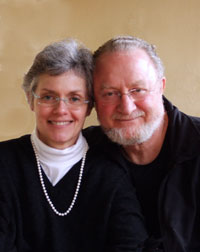The Green View /
Patricia and Conrad Cortellini
New hope and momentum in the cause for going green
 This January ushered in the new year as well as the second decade of the third millennium. In this new moment, there is cause for green optimism.
This January ushered in the new year as well as the second decade of the third millennium. In this new moment, there is cause for green optimism.
In the last part of the decade, awareness grew and initiatives were begun on many levels—from individuals to neighborhoods to communities of all sizes—culminating in the global gathering in Denmark for the Copenhagen climate conference at the end of the decade.
Although not legally binding, the conference established consensus for the need to reduce carbon emissions. U.N. Secretary-General Ban Ki-moon summed it up well: “This accord cannot be everything that everyone hoped for, but it is an essential beginning.” So this new decade opens with the hope of this “essential beginning.”
On the local level, numerous initiatives reinforce our sense of this beginning. Big green business came to Indiana when wind renewable energy made its dramatic appearance in Benton County, first in 2008 with the Goodland I wind farm, then Phase I of the Fowler Ridge Wind Farm in 2009.
Also in 2009, Indiana attracted a wind turbine manufacturer that will locate a production facility in New Albany, while six Indiana companies and one university were granted a total of $416 million in federal grants to accelerate the manufacturing and deployment of electric vehicles, batteries and components. These are only a few examples of the momentum building in the green economy lending hope to an economic recovery based on sustainability
In October 2008, the city of Indianapolis established the Office of Sustainability charged with the task of “coordinating city-wide sustainability efforts and to enact the sustainability policies of Mayor [Greg] Ballard,” according to a press release. This has spurred awareness among city business, professional and institutional leaders and has made sustainability a topic of considerable discussion, which may be the promise of action to come.
Beginnings occurred in our faith community as well. “Today the great gift of God’s Creation is exposed to serious dangers and lifestyles which can degrade it. Environmental pollution is making particularly unsustainable the lives of the poor of the world. … We must pledge ourselves to take care of creation and to share its resources in solidarity,” said Pope Benedict XVI on Aug. 27, 2006. This quote graces the cover of a 94-page document produced last July by a consultant for the Archdiocese of Indianapolis titled “Environmental Stewardship Agenda,” which lays out a comprehensive plan for the greening of the archdiocese.
These are all hopeful signs that sustainability will rise to sufficient priority to impact public reason and policy in a way that will begin to reverse the environmental damage wreaked by our over-consumptive way of life.
Yet most hopeful is the groundswell effort of individual volunteers who have launched green committees in virtually every congregation of every denomination in central Indiana. In January of 2009, a group of green teams from different faith traditions came together to present the green congregation workshop which drew 160 people representing 60 congregations to learn about local resources, how to start a green ministry, energy efficiency and, through shared experiences, gain inspiration for their own faith community.
Sustainability, however, transcends religious boundaries, and we Catholics must reach beyond the spiritual circle to people of the secular world in solidarity in order to realize the full promise of this new hope.
(Patricia and Conrad Cortellini are members of Christ the King Parish in Indianapolis.) †
 This January ushered in the new year as well as the second decade of the third millennium. In this new moment, there is cause for green optimism.
This January ushered in the new year as well as the second decade of the third millennium. In this new moment, there is cause for green optimism.